When we speak over Skype from her home in Forest Hills in New York, the same house she has lived in for 68 years, Marian Raphael is planning a “whole weekend of parties” for her next birthday. It’s a big one; in just a few weeks’ time, she’ll be celebrating 100 years since her birth in Rosscarbery in Co Cork, in March 1919.
Marian is just one of hundreds of Irish-born people – mostly women – living abroad who will receive the centenarian’s bounty from President Michael D Higgins for turning 100 this year.
Having come of age around the outbreak of the second World War, many of these women had their first overseas experiences working in England – particularly as nurses for the National Health Service (NHS) – where employment opportunities and wages during the war were better than in Ireland. There were around half a million Irish-born people living in Britain in the 1930s, the majority of them women.
I was in London all through the Blitz. My mother sent a telegram saying she needed me at home, but she just wanted to get me out of London. I went right back to my studies
But young Marian – whose name then was Margaret Hubbert – made the journey across the water several years before the war began. One of her earliest memories is of sitting on the bus from Rosscarbery to Cork city, beginning the long trip on her own back to boarding school in Oxfordshire, where she was sent to study at the age of 12.
“I’d take the train to Dublin, go to Dún Laoghaire and take the boat across to England, and then the bus to Banbury. My mother used to put a bag of sixpences around my neck, so I could tip the porters to carry my luggage. I was given sandwiches – there were no McDonalds in those days!” she laughs.
The NHS provided free training for nurses, so when Marian finished school, she applied to the Hammersmith Hospital School of Nursing.
“I was in London all through the Blitz,” she says. “My mother sent a telegram one time saying she needed me at home, so I went back to find she had told a story because she just wanted to get me out of London. But I didn’t stay. I went right back and continued with my studies.”
During her training, Marian’s daily task was to visit the subways, which had become overflow air raid shelters, to check for infectious disease among the people sleeping on the platforms.
She remembers it as a frightening time, but the nurses found light wherever they could, and the stories she tells about the Blitz still carry that humour.
“One time, we were very hungry so I decided I would go out for some fish and chips,” she says. “On my way back, the bombs started coming down so I stuck the fish and chips into my bra, and started crawling on the ground to get back to the hospital. Well I can tell you, I had some nice blisters when I got back! But I made it, and we had the fish and chips.”
Marian would sometimes stand up on the medicine cabinet and sing to distract her patients when the bombing was particularly bad. “You Are My Sunshine and Waltzing Matilda, they were great favourites,” she says.
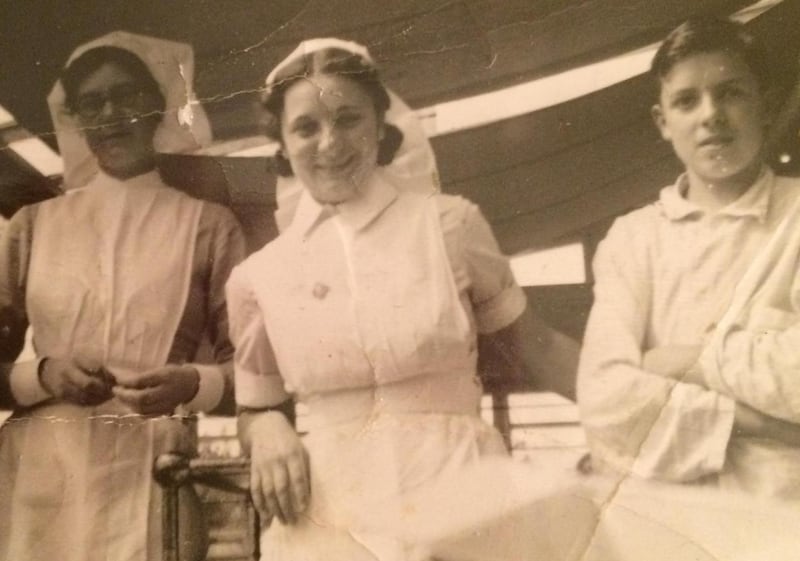
Shortly after graduating in May 1941, Marian joined the British army as a nurse with Queen Alexandra’s Imperial Military Nursing Service. She spent six weeks in Glasgow before being shipped overseas with 250 other army nurses on the SS Strathallan, bound for Oran in Algiers.
On December 12th, 1942, just 32km (20 miles) from shore, the ship was torpedoed. Marian and her cabin mates were trapped below deck with a jammed cabin door. They were among the last to reach the lifeboats. The ship sank leaving the nurses floating in their lifejackets for several hours before they were rescued and taken to Algiers.
With her nursing uniform and supplies lost with the sunken ship, Marian had to borrow clothes from the allied forces headquarters nearby, where she met Chester Martin Raphael, an American doctor. He insisted she return regularly to borrow more items, and the pair fell in love.
“The British and Americans weren’t getting along too well at that time. So when they found out there was a new British and American romance going on, they decided they would make a big deal of it and encourage us to get married. It helped with international relations!”
They were married on August 15th, 1943. Marian’s wedding ring was fashioned by a local goldsmith from a gold coin given to them by the future US president Dwight D Eisenhower, who was a general stationed in Algiers at the time, and a friend of the doctor’s. Marian still wears the ring.
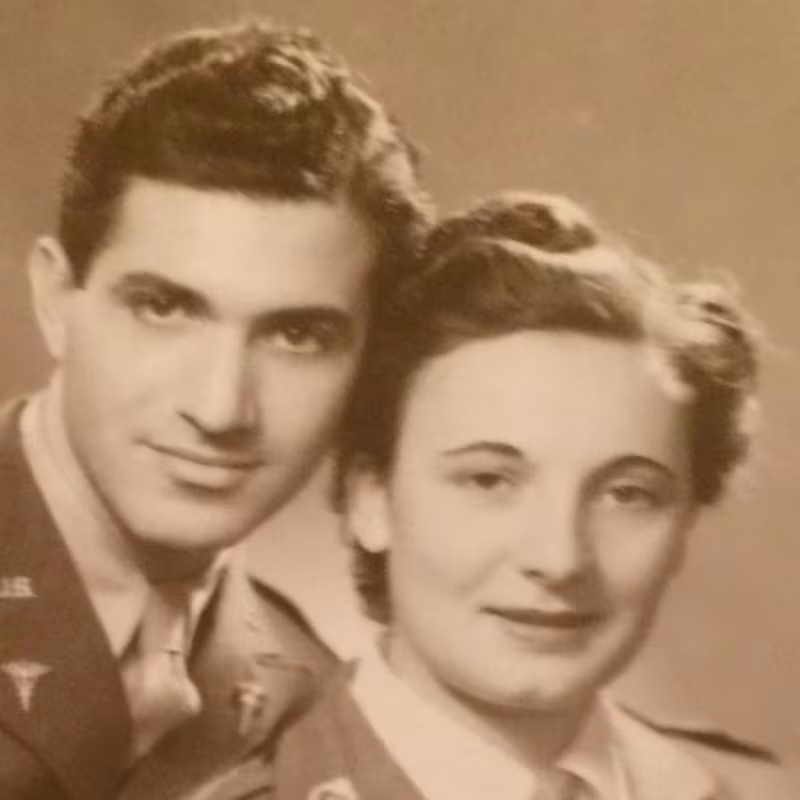
When she became pregnant the following year, the couple moved to New York city to live with Chester’s father. Her daughter Maura was born in December 1944, followed by Barbara in 1946.
“It was very hard. I was not accepted,” she says. “The American men were going over to England and Ireland and getting married, and the American women were not too happy about all these foreign brides. It was terrible. There were articles in the paper. I still have one somewhere. I missed home from time to time, but I had a child already, [so] I had to make a life.”
In 1950 the family moved to Forest Hills in New York, to the house where Marian still lives today.
She continued to live an active life, joining the local parent teacher association and transcribing books into Braille. When her mother became sick in Cork, she found a creative way to visit her often, by becoming a travel agent who got free trips not only to Ireland, but all over the world.
When a family friend asked if she would help out in his dental practice for a few weeks, Marian agreed. That was the beginning of 21 years of scheduling appointments and acting as a chair-side assistant. Marian was 80 years old and still making the trip into the surgery in Manhattan by subway when Chester became ill. She nursed him at home for two years until his death in 2001.
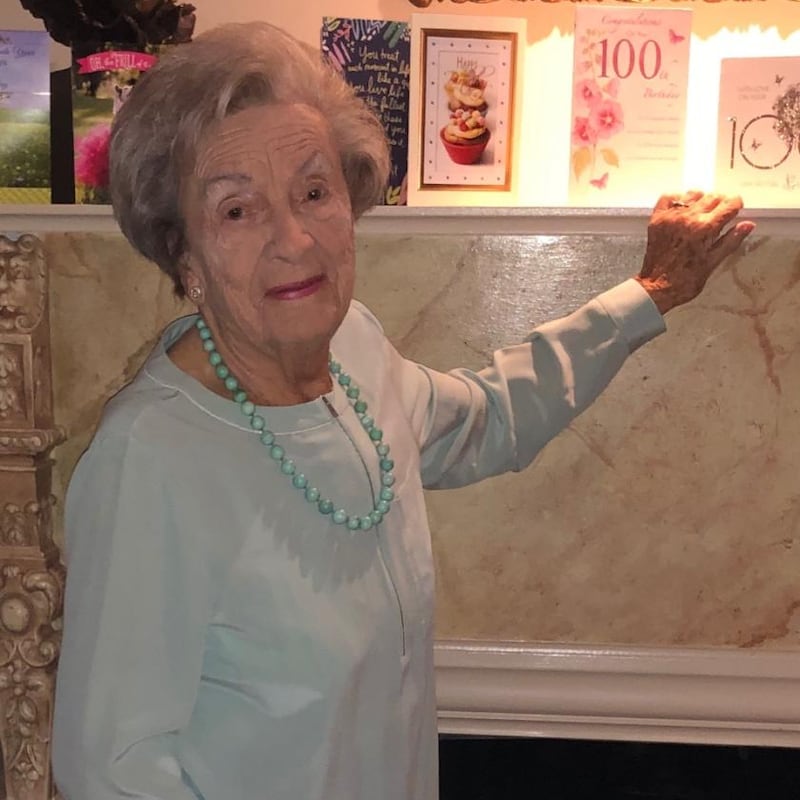
Marian hasn’t been back to Ireland since her mother’s death in 1964, but her family has visited several times. Her grandson took his three children there for Christmas this year, touring the country for a week.
Asked the secret to her longevity, Marian says that in the British army she was told: “A moving target is hard to hit.”
She has remained active, reads The New York Times every morning, and books on her iPad. She spends a few months in the winter in South Carolina with frequent visits from her grandson and great-grandchildren.
For her 100th birthday, her grandson is coming from North Carolina with his three children to celebrate.
“I keep saying, don’t push it, God willing I’ll make it!” she says. “I have been very lucky in life.”
180 IRISH CENTENARIANS OVERSEAS
In a tradition started by president Douglas Hyde back in 1940, the president of Ireland now sends out hundreds of letters of congratulations each year to Irish-born centenarians living in Ireland and all over the world, with an accompanying “bounty” cheque for €2,540.
Women certainly have the edge over men when it comes to reaching the big one-oh-oh. Of the 431 Irish-born people who received the centenarian’s bounty in 2018, 353 were women, compared to just 78 men. A total of 180 Irish centenarians were living outside of the Republic, mostly in the UK, followed by the US, Canada and Spain. Another 576 people received a special commemorative coin to celebrate their 101st or subsequent birthday, 252 of whom were living abroad.
Two other women who have lived remarkable lives abroad and surpassed this significant milestone also recently shared their stories with The Irish Times over Skype, with the help of a family member or friend.
Christina Woollard
Lives in New Zealand. Born December 21st, 1914
Christina, or Chris, Woollard was 14 when her parents and 10 siblings left their small farm in Raheen in Co Laois for a new life in Birmingham, 90 years ago this year. She worked at an office in Northfield until the war broke out in 1939, when she joined the Air Raid Precautions service. Throughout the Blitz, she drove an ambulance all over the city.
In 1944, when the air raids had subsided, the Navy, Army and Air Force Institutes (NAAFI) were advertising for women drivers, so she joined up and was sent to Roubaix in France. There, Chris worked with an executive commissioned to take over businesses occupied by the Nazis during the war.
They were all astounded at the British women driving cars. The women in Germany thought that just wasn't done. But sure they are all at it now, aren't they?
After the war ended, Chris drove a three-tonne truck and mobile canteen for the NAAFI in British-occupied parts of Germany, where servicemen’s families were stationed.
“They were all astounded at the British women driving cars,” she remembers. “The women in Germany thought that just wasn’t done. But sure they are all at it now, aren’t they?”
It was there she met the love of her life, Leslie Moriarty Woollard, an army officer born in India to a father in the colonial service.
“We were invited to a sergeant’s mess, a social evening,” Chris recalls. “This chap stood up and came to me and said he had seats and invited us to sit. He was very polite.”
The couple were married in southern Germany in 1951 by an Italian priest, celebrated by their friends and colleagues in the army and Chris’s sister Margaret, who had travelled from England to be her bridesmaid.
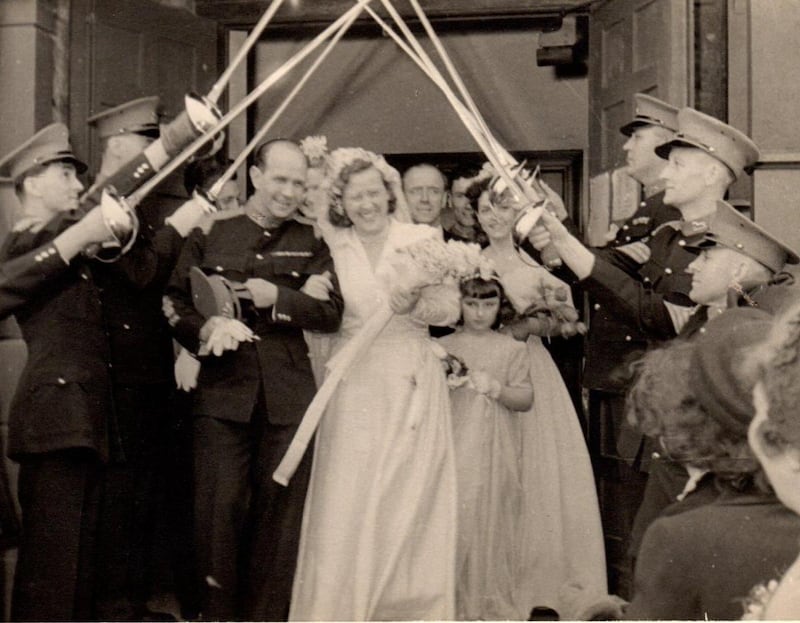
On the completion of Leslie’s service three years later, the couple returned to England for a time before he secured a job in Dunedin in New Zealand, as conductor of the army band.
“I was very homesick leaving all my family, leaving Mum,” Chris says, remembering how much further away she felt from home.
“My brother was stationed in Auckland. He said I had too much time on my hands and I should get a job, so I did, in an insurance company, and there I stayed until I retired in 1977.”
Chris and Leslie both loved the outdoors, and joined walking groups together. He died in 1995.
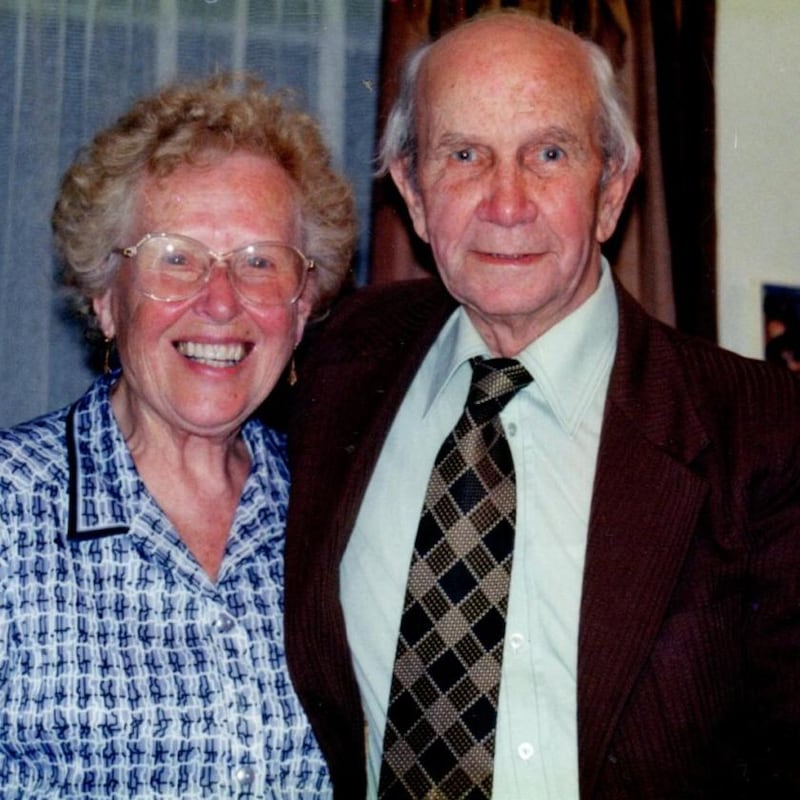
“I have been back to England many times,” Chris says, “and back to Ireland too to visit my cousins. One of my sisters wanted me to go back and live in London, but I was well established in Dunedin then.”
Chris celebrated her 100th birthday in the company of “more than 100 friends” at the retirement village where she now lives, close to her nephew John Cartwright and other family members. “I’ve had a party at Christmas time every year since. I have some talented relations who sing. I have a great niece who is a ballet dancer, and a brother-in-law that plays the spoons. It’s just great.”
Sr Loyola Grehan
Lives in Fiji. Born December 27th, 1918
In Liverpool on a cold March day in 1947, Sr Loyola Grehan boarded the Arawa steam liner, bound for Auckland in New Zealand. The ship – by then around 70 years old – had seen far better days, and the roof began to leak shortly after it set sail with its hundreds of passengers on board.
The 40-day journey is one the Sligo nun has never forgotten. Over the phone from her home in St Mary’s convent in Nadi in Fiji, she says: “There was no such thing as travelling by plane then”.
“One of the crew died on the way. The captain came to me and said, ‘Sister, one of the crew is not well, will you come and sit with him during the night?’ So I got my bottle of holy water, my crucifix and my rosary beads and I went with the captain to the sick man’s room to pray with him.”
The man died as they said the rosary, and he was buried at sea. “It was a very touching experience,” she remembers.
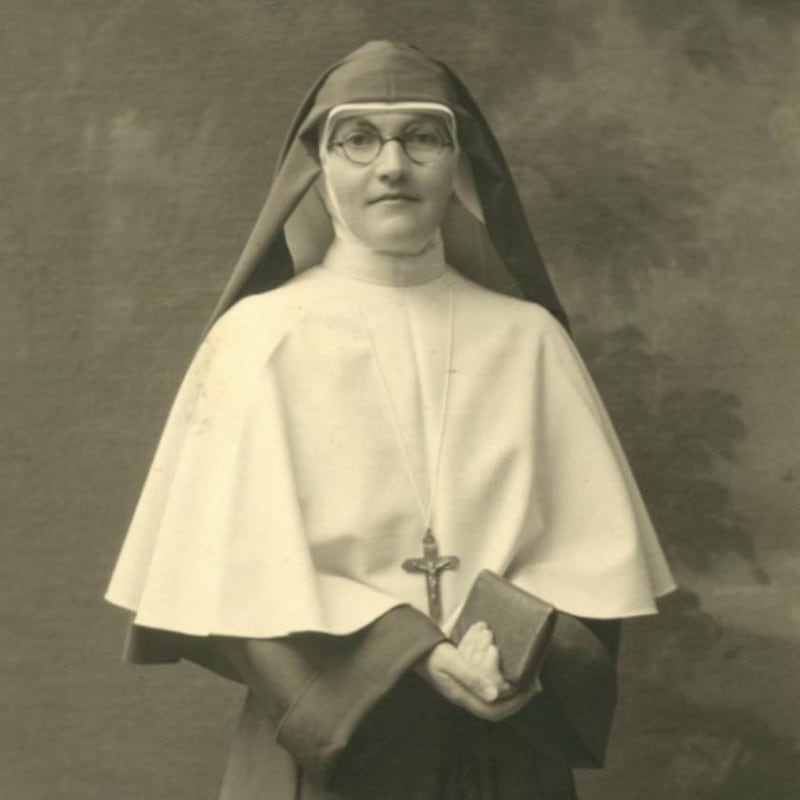
The youngest of eight siblings, Kathleen Grehan had grown up on a farm in Dromore West in Co Sligo. She always wanted to be a nun, and in 1939, shortly before her 20th birthday, she entered the Marist Order in Carrick-on-Shannon in Letrim.
As a young novitiate she was sent to Peckham in London, but as she and 14 others were preparing for their first profession that September, Germany invaded Poland and war between England and Germany looked imminent. The novitiates were evacuated in secret in the middle of the night to the seaside town of Paignton in Devon, where she was professed on October 26th.
She spent the war years back in Dublin studying for a BA and a higher diploma in education at UCD. In 1945, with the war finally at an end, she requested to be sent to the missions in Fiji, which was approved, provided she spent a few years in New Zealand first.
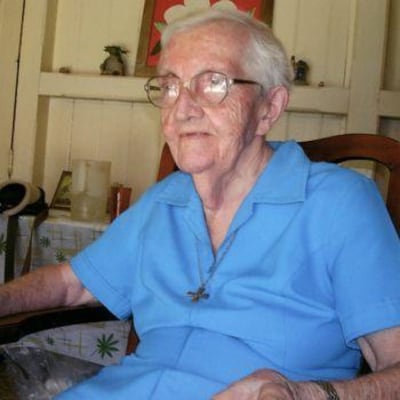
After those five-and-a-half gruelling weeks at sea, Sr Loyola was met on the dock in Auckland by another Irish nun, who brought her to Mount Albert, where she began teaching the very next day.
“There was no holiday for me!” she laughs.
It took 15 years before her wish to go to Fiji was finally granted. In 1962, she made the journey back to Ireland for a holiday with family, before travelling – by plane this time – to the small island of Ovalau, where she spent “20 happy years” teaching at a high school.
She devoted herself to helping young Fijian women learn English and broaden their career prospects by arranging internships in a local bank, but also taught English literature, French, geography, maths and library science. Her past pupils include an archbishop, managers in the civil service and parliamentarians.
Many former students came back to the convent to celebrate her 100th birthday in December, where she was presented with a plaque and a giant cream cake by the president of Fiji, Jioji Konrote.
Approaching her retirement back in the 1980s, Sr Loyola was given the option to return to Ireland to spend the rest of her life there, but she “had no hesitation in deciding” to stay put.
“I came out to Fiji, I have been living in Fiji and I want to die in Fiji. That was my wish. I never regretted coming.”












